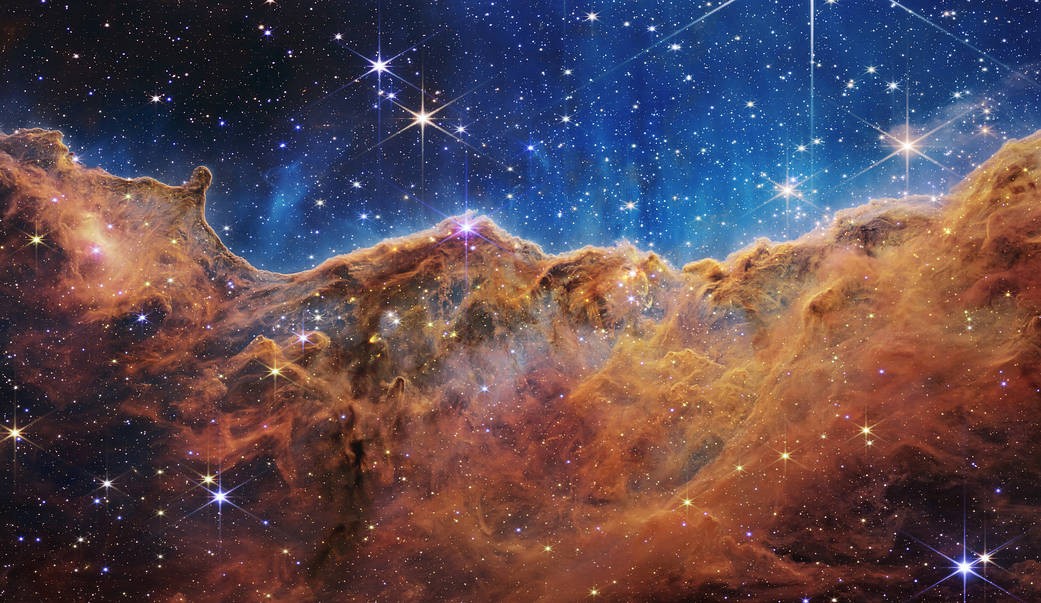
UC hopes to inspire physics teachers with latest discoveries
Program designed to help science teachers recruit the next generation of physicists
The demand for physicists is expected to grow by 8% over the next decade — more than most occupations.
To meet this growing need, the University of Cincinnati is taking part in a program that helps science teachers develop their skills and inspire the next generation of physicists.
Sponsored by the National Science Foundation and the U.S. Department of Energy, QuarkNet is a national program that helps high school teachers bring real research experience into their classrooms to encourage students to pursue careers in physics. A group of Cincinnati-area teachers joined physics faculty in UC’s College of Arts and Sciences in June to learn more about the startling discoveries taking place in labs around the world.
“The idea is for teachers to get training that they can bring back to their classroom to share their interest and enthusiasm with students,” Associate Professor Conor Henderson said.
QuarkNet is a nonprofit collaboration that provides exercises that teachers can present to their students based on real research data. The group works with UC and dozens of other universities across the country to help high school science teachers stay up to date on the latest physics news.
The UC conference provided teachers with an introduction to the Standard Model of Physics and the equipment used to detect elementary particles. They also reviewed the programming language Python used by many physicists to compile and analyze data. Lastly, teachers learned about the emerging career opportunities available to physics grads.
As a physicist who studies elementary particles, Henderson is exploring fundamental questions about the universe at CERN, one of the world's largest centers for scientific research. At CERN in Switzerland, Henderson uses the world’s most powerful particle accelerator to look for evidence that could upend the Standard Model, a bedrock theory of physics that explains forces such as electromagnetism governing the universe.
“I work on Large Hadron Collider experiments that are attempting to measure properties of the Standard Model such as the weak force. We’re searching for physics beyond the Standard Model,” Henderson said. “It’s good science that advances our understanding.”
The lab produces volumes of research — hundreds of journal articles each year. Some have captured the world’s imagination. In 2012, CERN discovered an elementary particle named after British theoretical physicist and Nobel Prize winner Peter Higgs. The Higgs Boson is popularly known as “the God particle.”
Henderson said CERN has made many other meaningful contributions to society, including the World Wide Web, the first web server, the first web browser and the formatting system called HTML still used today.
That possibility of discovery is what excites Henderson about studying physics and what he hopes science teachers impart to their students.
“There are day-to-day challenges,” he said. “If you enjoy challenging yourself with these problems you might solve, it’s a fun career.”
As part of QuarkNet, UC faculty briefed high school teachers on a myriad of research topics ranging from dark matter to the search for a fourth type of neutrino.
Are we about to make a big advancement around the Standard Model?
Kenneth Cecire, QuarkNet National Staff
Likewise, physicists learn many skills to pursue their theoretical or research questions.
“You learn programming, machine learning and AI techniques to process these vast amounts of data,” he said. “It’s a great combination. It’s fundamentally interesting from the point of view of understanding the universe while also arming yourself with skills that can be applied to a range of other tasks.”
Kenneth Cecire is an educational specialist at the University of Notre Dame who serves on the QuarkNet national staff. Physics appeals to him because of its tantalizing promise of new discoveries, he said.
“Are we about to make a big advancement around the Standard Model or are we on the cusp of a new theory that is more comprehensive, with a new understanding of our universe?” Cecire asked.
These are questions that inspire students to pursue their own curiosity in physics, he said.
“What I get out of the program is the chance to meet and work with really great teachers. These are teachers who are very interested in both their own professional development and the cutting edge of physics,” he said.
“What I hope they get out of it is ways to bring exciting content and authentic experimental data to their classes that helps them to teach the physics that they already teach,” he said.
Featured image at top: The James Webb Space Telescope captures an image of the Carina Nebula. Photo/NASA, European Space Agency, Canadian Space Agency and Space Telescope Science Institute
Next Lives Here
The University of Cincinnati is classified as a Research 1 institution by the Carnegie Commission and is ranked in the National Science Foundation's Top-35 public research universities. UC's graduate students and faculty investigate problems and innovate solutions with real-world impact. Next Lives Here.
Related Stories
UC hopes to inspire physics teachers with latest discoveries
June 29, 2023
Sponsored by the National Science Foundation and the U.S. Department of Energy, QuarkNet helps high school teachers bring real research experience into their classrooms. A group of Cincinnati-area teachers joined physics faculty in UC’s College of Arts and Sciences in June to learn more about the startling discoveries taking place in labs around the world.
UC to receive over $1.5 million from the National Science Foundation
September 14, 2022
UC receives $1.6 million in federal funding from National Science Foundation.
UC Physics hits road to witness solar eclipse
April 9, 2024
UC's Physics Department took students to Blue River Memorial Park in Shelbyville, Indiana, to witness the solar eclipse in the path of totality.
